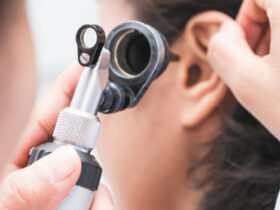 Now that summer is upon us, we have become aware of the need for proper hydration, sunscreen and sun block as well as water safety. Not to be left out, depression has a place in the summer as part of a unique syndrome known as Seasonal Affective Disorder (SAD). This illness is a type of depression that is related to changes in seasons; SAD begins and ends at about the same time every year. If you’re like most people with SAD, your symptoms start in the fall and continue into the winter months, sapping your energy and making you feel moody. Less often, SAD causes depression in the spring or early summer months. In either case, symptoms may start out mild and become more severe as the season progresses. It is often not linked to any underlying psychological stressors and does not typically respond to traditional anti-depressant treatments. Visitors from the northern states are often more aware of this than the residents of the Sunbelt as their winter days are longer. In fact, there are certain office supply stores that sell the treatment in the form of 10,000 Lux White light. It must also be noted that Mood Disorders ranging from Major Depressions to Bipolar Disorders may also have intensification during these seasonal shifts that are independent of psychotropic medications. Carefully elicited histories from an individual can often spare a person from suffering unnecessarily.
Now that summer is upon us, we have become aware of the need for proper hydration, sunscreen and sun block as well as water safety. Not to be left out, depression has a place in the summer as part of a unique syndrome known as Seasonal Affective Disorder (SAD). This illness is a type of depression that is related to changes in seasons; SAD begins and ends at about the same time every year. If you’re like most people with SAD, your symptoms start in the fall and continue into the winter months, sapping your energy and making you feel moody. Less often, SAD causes depression in the spring or early summer months. In either case, symptoms may start out mild and become more severe as the season progresses. It is often not linked to any underlying psychological stressors and does not typically respond to traditional anti-depressant treatments. Visitors from the northern states are often more aware of this than the residents of the Sunbelt as their winter days are longer. In fact, there are certain office supply stores that sell the treatment in the form of 10,000 Lux White light. It must also be noted that Mood Disorders ranging from Major Depressions to Bipolar Disorders may also have intensification during these seasonal shifts that are independent of psychotropic medications. Carefully elicited histories from an individual can often spare a person from suffering unnecessarily.
Fall and winter SAD Sx
• Depression
• Irritability
• Tiredness or low energy
• Problems getting along with other people
• Hypersensitivity to rejection
• Heavy, “leaden” feeling in the arms or legs
• Oversleeping
• Appetite changes, especially a craving for foods high in carbohydrates
• Weight gain
Spring and summer SAD Sx
• Depression
• Feeling hopeless and worthless
• Having low energy
• Trouble sleeping (insomnia)
• Weight loss
• Poor appetite
• Agitation or anxiety
Seasonal changes in people with bipolar disorder
In some people with bipolar disorder, spring and summer can bring on symptoms of mania or a less intense form of mania (hypomania), and fall and winter can be a time of depression.
ETIOLOGY
SAD is thought to be related to abnormal circadian rhythm, brain serotonin levels or brain melatonin levels. A more integrative explanation is that there is an abnormal processing of external light through the eye to the pineal gland that impacts the melatonin level and the subsequent conversion to serotonin. The pineal (literally “pine cone”) gland is a pea-sized structure located deep in the center of the brain. This gland acts as a sort of light meter for the brain and body, receiving information from the eyes and producing the melatonin hormone in response to that information. By producing and sending out higher or lower levels of melatonin according to the amount of light the eyes receive, the pineal gland sets and regulates the brain’s internal clock as well as functional serotonin levels.
TREATMENTS
Traditional antidepressants have not been as successful in treating SAD as they have in non-SAD depressions. SSRIs occasionally do have a beneficial effect. TBS (Theta Burst Stimuli) have also been reported to be effective. The most reliable treatments have revolved around the use of “light-boxes” that modify the amount of light the brain receives. When SAD strikes in the winter time, the addition of 1-2 hours of 10,000 Lux White light at the beginning of the day before sunrise can often control the depression. Conversely, the summer variation often responds to a decrease in the amount of light the person is exposed to and adding some darkness to the day has been noted to be effective. When sleep and circadian parameters are held constant, depressive and learning impairments can be directly related to intrinsically photosensitive retinal ganglion cells. This is the entry to the pineal and the doorway to controlling SAD.
Diurnal rhythms in nature regulate hunting, mating, and hoarding and despite our socialization we still have some instinctual behaviors that respond to phenomenon such as light and dark. Be aware of seasonal variations in mood, regardless of previously diagnosed mood disorders, and get the necessary treatment from a qualified professional.
For more information, please visit our website, www.paswfl.com or 239-332-4700. My staff and I are standing by to be of assistance to you.
About Dr. Robert Pollack
Robert W. Pollack, M.D. CEO is a Florida-licensed Board Certified Psychiatrist. He has been in practice since 1977 and has served the public in many capacities.
The American Psychiatric Association Board of Trustees, January 1, 2015, has granted him Life Fellow status.
Psychiatric Associates of Southwest Florida (PASWFL) is a private solely owned psychiatric medical practice located in Fort Myers, Florida. Dr. Pollack is currently the CEO of Psychiatric Associates of Southwest Florida and resides in Fort Myers. His practice serves people from ages 18 and up. His current special interests focus on the use of Genomics to aid in the determination of the most efficacious way to utilize psychotropic medications as well as the use of rTMS in the treatment of refractory depressions and other psychiatric illnesses. Ketamine, Theta Burst Stimulations and new and innovative treatments for psychiatric patients.
At PASWFL, appointments are scheduled quickly, within one week of your call. For more information on Ketamine and our practice, please visit our website at www.paswfl.com.
PASWFL
6804 Porto Fino Cir #1, Fort Myers, FL 33912
Office: 239-332-4700 | TMS & Ketamine: 888-491-4171








